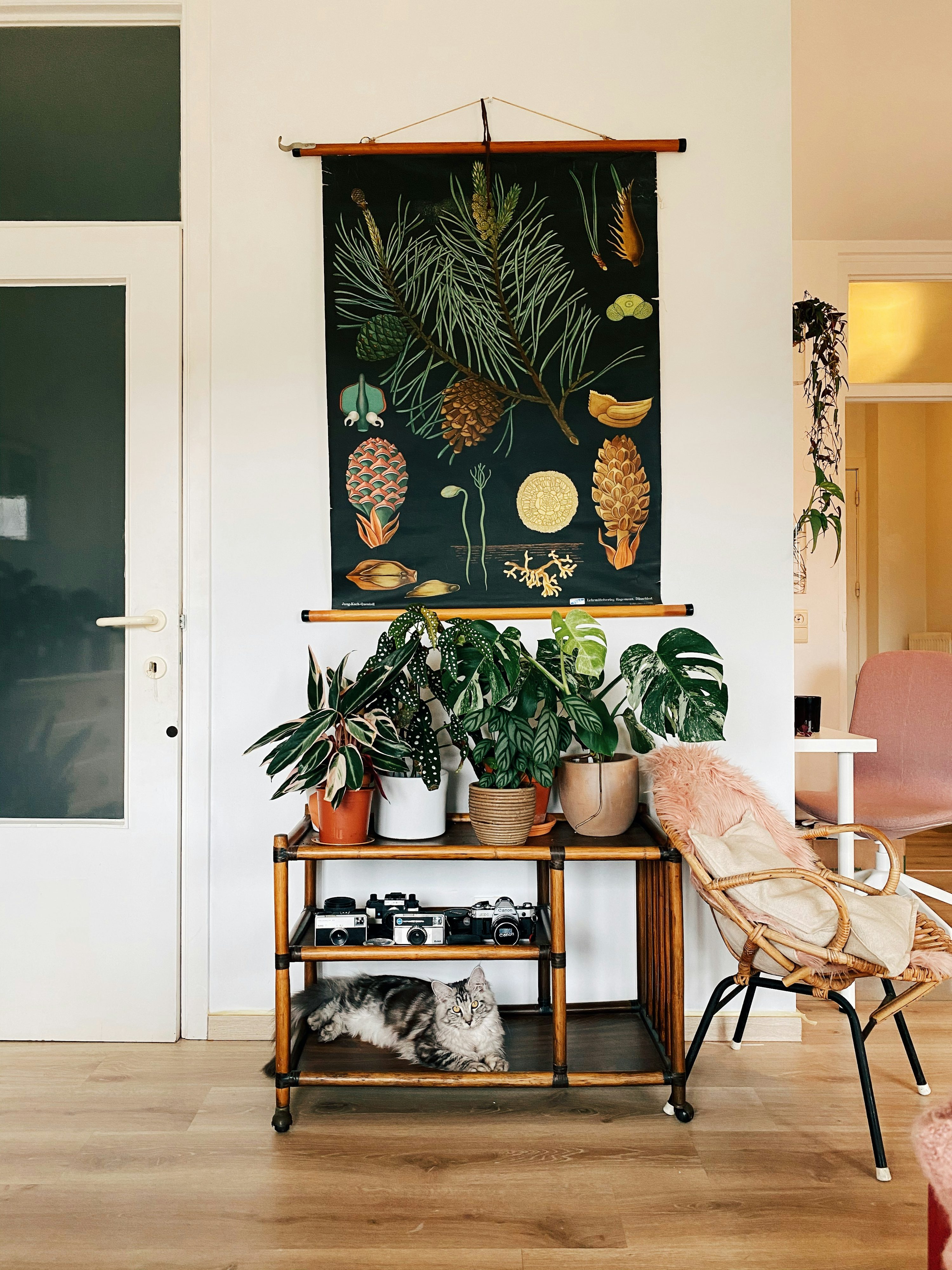You don’t need a massive house, a balcony, or even a “proper” garden to create a peaceful, nature-infused sanctuary at home. In fact, the smaller the space, the more intentional and transformative every design choice can become. Think of it less as decorating — and more as atmosphere engineering. Here’s how to turn even the most compact city corner into a calming green retreat that instantly softens your energy the moment you walk in.
Start With a Vision: Define Your Green Retreat Style
The first step in transforming your space is determining what "calming" means to you. Different people find peace in different aesthetics:
- Minimalist Zen: Clean lines, carefully curated plants, lots of negative space, and a focus on simplicity. Think single statement plants like a fiddle leaf fig or a sculptural snake plant paired with neutral tones.
- Lush Jungle: Maximum greenery with plants at various heights creating layers of foliage. This style embraces abundance and the feeling of being enveloped by nature.
- Modern Botanical: A curated collection of unique specimens displayed like living art, often featuring unusual varieties or dramatic foliage in contemporary planters.
- Cottage Garden: A softer, more romantic approach with flowering plants, trailing vines, and a mix of textures that feels effortlessly organic.
Choose a direction that resonates with your personality, as authenticity is key to creating a space where you'll truly feel at ease.

Find Your Anchor Zones
Start with your anchor zones. Not every inch needs plants — just the right places. Focus on the areas where you begin and end your day: your bedside, entryway, reading chair, or the corner that catches the morning light. These small emotional checkpoints are powerful. A single leafy plant here has more impact than scattering ten randomly across the house. Choose plants by feeling, not just aesthetics: trailing pothos to add softness, sculptural sansevieria for quiet strength, or fluffy ferns for that woodland-like calm. When arranged intentionally, plants immediately shift air, movement, and mood — even before you consciously notice them.
Vertical Is Your Best Friend
Next, think elevation, not expansion. If floor space is limited, grow vertically. Floating shelves, wall-mounted planters, railing hooks, ladder racks — these create height, rhythm, and visual layering, making a room feel more alive (and bigger) without taking up usable space. Don’t be afraid to mix silhouettes: tall upright plants for structure, cascading vines to draw the eye downward, smaller air plants or moss bowls to soften the edges. A V-shaped visual flow that rises and falls is naturally calming to the brain — it mimics the way nature unfolds in the wild.
Play With Light
Light is your invisible collaborator here. Plants don’t just add greenery — they change how light moves, diffuses and breathes in a room. Place trailing plants near windows where sunlight can bounce off their leaves, casting soft dancing shadows through the day — tiny atmospheric details that the subconscious deeply craves. If your space is dim, replace harsh white bulbs with warm full-spectrum grow lights disguised as ambient lamps. These quietly support plant health while making your room feel golden-hour cosy, emulating the softness of late afternoon light — the most restorative light humans respond to.

Sensory Design: Beyond the Visual
A truly calming retreat engages all the senses, not just sight. Here's how to create a multi-sensory green sanctuary:
Scent
Incorporate fragrant plants like jasmine, gardenias, or scented geraniums. Even herbs like lavender and mint release soothing aromas when you brush against them. Consider adding eucalyptus branches to your bathroom—the steam from showers releases their invigorating scent.
Sound
The gentle trickle of a small tabletop fountain adds soothing water sounds that mask urban noise. Place it near your plants to create a mini ecosystem effect. If space doesn't permit a fountain, consider a white noise machine with nature sounds or simply opening windows to let in natural ambient sounds when weather permits.
Touch
Include plants with interesting textures that invite gentle interaction. The velvety leaves of African violets, the pleasing give of succulent leaves, or the feathery fronds of ferns all provide tactile interest. This physical connection to your plants deepens the sense of being surrounded by living nature.
Air Quality
Plants naturally humidify air and remove toxins, but you can enhance this effect by grouping plants together (they create their own microclimate) and choosing champion air purifiers like spider plants, Boston ferns, and bamboo palms.

The Final Touch: Personal Meaning
The most calming spaces are those infused with personal meaning. Include plants gifted by loved ones, specimens that remind you of meaningful places, or varieties connected to your heritage. These emotional connections deepen your retreat's ability to provide comfort and peace.
Consider creating a small meditation corner within your green space—a comfortable cushion, a plant or two, perhaps a candle or meaningful object. This dedicated spot for stillness becomes a powerful anchor for your well-being practice.
Ultimately, a calming green home is not about volume — it’s about tone. A room where your shoulders drop when you enter. Where shadows move like breath. Where greenery doesn’t decorate, it restores. The confidence that nothing here demands urgency from you — only soft attention, slowly, quietly, when you’re ready.



0 comments